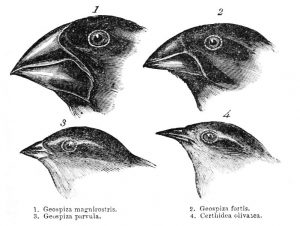Introduction: Definitions are used to explain technical terms and concepts to an audience that may not be familiar with it. This assignment requires us to explain a technical term or concept using each of the three types of definitions, namely: parenthetical, sentence and expanded. The definitions will be formulated while keeping the technical level of the audience in mind.
Term: Evolutionary fitness
Situation: A biology professor is differentiating the concept of evolutionary fitness from physical fitness to the general public at a public seminar on biological evolution.
Parenthetical definition: (quantitative measure of natural and sexual selection)
Sentence definition: Evolutionary or Darwinian fitness is a concept used by evolutionary biologists to quantify how successful an individual is likely to be at reproducing and passing on its genes to the next generation. It is different from physical fitness which is a state of health and wellbeing.
Expanded definition: Charles Darwin published his book, “The Origin of Species” in 1859 which presented the ‘theory of evolution by natural selection’ which revolutionized Biology (Dobzhansky 1973). Darwin proposed the idea that all species have descended from a common ancestor. While such a concept had existed before Darwin, it could not gain currency because a mechanism for it seemed incomprehensible. The mechanism that Darwin presented is known as ‘natural selection’, a phenomenon that Herbert Spencer popularly referred to as “survival of the fittest”.
Evolution is the process by which new species can arise by the modification of existing species. Natural selection is what makes it possible. The postulates of natural selection can be described as the following sequential process:
- Variation exists within all organisms. Variation that is caused by mutations (slight changes) in genes is heritable and will be passed down to offspring. Such variation is the feedstock of natural selection.
- Some variants have mutations that confer a beneficial trait. However slight the advantage, these variants have a more favourable chance of surviving and reproducing in their environment. The favourable mutation or ‘gene’ is described as making the organism more ‘adapted’ to its environment.
- Such variants are likely to leave behind more offspring than variants that don’t have the advantageous trait. Each of their offspring also inherits the favourable gene.
- Over many generations, the favourable gene becomes more widespread, eventually spreading throughout the population. This process is cumulative and many mutations occurring over many generations cause large-scale change in a species. This evolutionary process makes an organism more adapted to its environment.
- If two populations of the same species are separated, they can evolve along very different trajectories and eventually become sufficiently different to become two separate species. This branching off event is known as speciation, or the birthing of a new species.
Image 1: Darwin’s Finches are an example of evolution by natural selection. Within 15 milliom years of arriving on the Galapagos islands, the ancestral species had split into 15 species, each of which was adapted to the unique microenvironments of each of the islands in the archipelago.
(Verginelli et al. 2009)
As point 3 above makes clear, the concept of evolutionary fitness relies on individual reproductive success. It is often wrongly conflated with the idea of physical fitness. Physical fitness implies living a long life-span and having increased survival. Whereas physical fitness is often a component of evolutionary fitness, physical fitness in isolation is inconsequential to the evolutionary process. An organism that is physically fit but does not enjoy greater reproductive success will not pass on its beneficial genes to the next generation at a greater rate. Therefore, the beneficial gene will have no impetus to increase in frequency and may even be lost completely due to random events known as genetic drift (Gould 2002). Therefore, it is clear that Herbert Spencer’s well known adage “survival of the fittest” should correctly be interpreted as “survival of the form that is most likely to leave behind the most copies of it in successive generations” (Wassersug and Wassersug 1986).
References:
- Dobzhansky, Theodosius (March 1973), “Nothing in Biology Makes Sense Except in the Light of Evolution”, American Biology Teacher, 35 (3): 125–129
- Gould SJ (2002). “Chapter 7, section “Synthesis as Hardening””. The Structure of Evolutionary Theory.
- Verginelli, Fabio & Aru, Federica & Battista, Pasquale & Mariani-Costantini, Renato. (2009). Nutrigenetics in the Light of Human Evolution. Journal of nutrigenetics and nutrigenomics. 2. 91-102. 10.1159/000228251.
4. Wassersug, J. D., and R. J. Wassersug, 1986

Leave a Reply